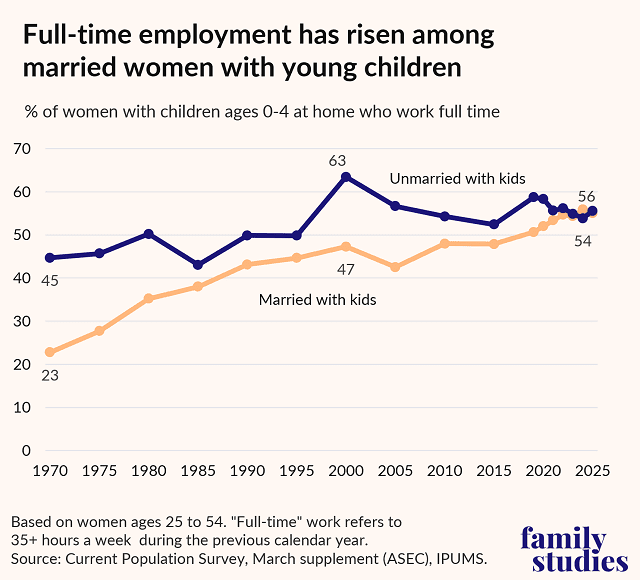by Jenet Erickson
The work and family landscape for women is changing. After rising sharply across the 1970s through the 1990s, the “revolution” in women’s labor force participation appeared to stall for the next two decades. That “stall” reflected a persistent preference among married mothers, especially those with young children, to pull back from full-time employment. Marriage offered them the choice to not be employed full time especially when their children were young, while unmarried mothers did not have that option.
Lisa Belkin’s 2003 New York Times piece, “The Opt-Out Revolution” ignited a cultural conversation by chronicling the number of married educated mothers who opted out of careers and delayed employment until their children were older or chose part-time positions that afforded them more “satisfaction, balance, and sanity.”





